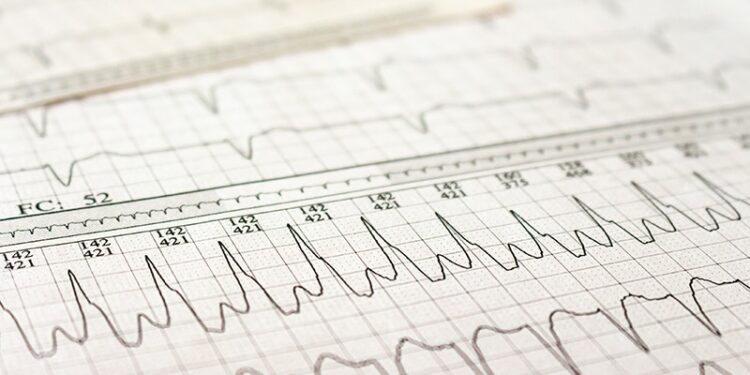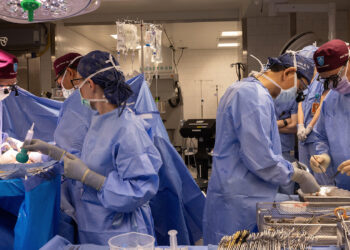Demonstrating that the best solution is not always a multistage approach, a new trial shows catheter ablation is superior to a combination of antiarrhythmic drugs and lifestyle changes — weight loss, more exercise, and alcohol reduction — when treating atrial fibrillation (AF) in patients who also have obesity.
The PRAGUE-25 trial, led by Pavel Osmancik, MD, PhD, with the Cardiocenter at Charles University in Prague, found catheter ablation was roughly twice as effective in an intention-to-treat analysis at controlling AF at the 1-year mark compared with a combination of antiarrhythmic drugs and lifestyle modification (73% vs 34.6%).
A “referral to [catheter ablation] in this population should not be delayed until the patient loses weight,” according to the researchers, who published their findings online on June 30 in the Journal of the American College of Cardiology simultaneously with a presentation at theNew York Valves 2025 Conference.
Obesity: A Strong Predictor of AF
AF, the most common sustained heart arrhythmia, affects about 60 million people worldwide. Obesity is one of its strongest predictors. An increase in BMI of 5 has been linked with a 19%-29% higher incidence of the rhythm disorder.
The PRAGUE trial was a randomized, noninferiority trial conducted in five centers in the Czech Republic. Patients that were included had symptomatic AF (paroxysmal, persistent, or long-standing persistent) and a BMI of 30 to 40.
Patients were randomly assigned 1:1 either to receive catheter ablation (n = 100) or a combination of medication and lifestyle changes (n = 103) from May 2021 to November 2023. Baseline characteristics were balanced, according to the researchers.
After randomization, all patients had a baseline cardiopulmonary exercise test, echocardiography, quality of life analysis, blood biochemistry testing, and a baseline 7-day electrocardiographic Holter recording.
Patients in the catheter ablation group underwent ablation within 6 weeks of randomization. Lifestyle modification was started within 4 weeks after randomization and was managed by teams of dietary specialists and physiotherapists, rather than cardiologists.
Patients in the combination therapy group lost significantly more weight at 12 months (about 6 kg, P < .001 compared to 0.35 kg in the other group), and that weight loss was maintained through the 24-month follow-up. The weight loss goal in this trial was 10%, an ambitious target in the period, especially given the physical limitations associated with AF.
Ramesh Hariharan, MD, cardiac electrophysiologist at UTHealth Houston and Memorial Hermann Health, Houston, who was not part of the study, said much of this research was conducted before the widespread use of GLP-1 receptor agonists, and those medications may help current patients achieve greater weight loss faster.
But even with greater weight loss, Hariharan said, the new findings reinforce the idea that no option alone is enough. Lifestyle changes and medicines need to accompany ablation, not replace it, he said, “otherwise we’re going to end up doing [ablations] more frequently.”
What’s more, technology has improved in the last year with nonthermal pulsed field ablation, which offers “far fewer collateral damage complications” and results in a 45-minute procedure “compared to a 2- to 4-hour procedure before. It has made ablation a lot easier.”
Gregory M. Marcus, MD, MAS, associate chief of cardiology for research at
UCSF Health, San Francisco, said the evidence “is already definitive that catheter ablation is superior to antiarrhythmic drugs, and there is evidence that successful lifestyle change can reduce the burden of atrial fibrillation.” But this trial is the first to show a head-to-head comparison of ablation with a combination of antiarrhythmic drugs and lifestyle changes.
Marcus said he is not convinced the findings exclude the possibility some in this patient population may still be able to treat their AF without ablation.
“For an obese, very sedentary person who drinks too much alcohol, those are, at least theoretically, the prime candidates for lifestyle modification as a way to effectively treat their Afib,” he said.
One important lesson, Marcus said, is that this adds to the growing evidence that when considering the population at large with AF, “on average, catheter ablation is pretty definitively the most effective way to reduce the chance of atrial fibrillation recurrence.”
But some of the most interesting results were in the group who underwent lifestyle modification, he said. In addition to weight loss and improved exercise capacity, they experienced a statistically significant decrease in hemoglobin A1c concentrations of 1.4 mmol/L compared with an increase of 2.5 mmol/L in patients who received catheter ablation. “Those are things that will prolong life and will also improve quality of life,” he said.
“Whether we’re going to do an ablation or not,” Marcus added, “we should always counsel our atrial fibrillation patients about healthy lifestyle management. There are other things to life besides atrial fibrillation.”
The study authors and Hariharan reported no relevant financial disclosures. Marcus is a consultant and was a co-founder of the startup InCarda Therapeutics, which is investigating a novel therapy for the treatment of acute AF.
Marcia Frellick is an independent, Chicago-based healthcare journalist and a regular contributor to Medscape.
Source link : https://www.medscape.com/viewarticle/catheter-ablation-beats-medications-plus-lifestyle-changes-2025a1000hh5?src=rss
Author :
Publish date : 2025-07-01 05:53:00
Copyright for syndicated content belongs to the linked Source.










